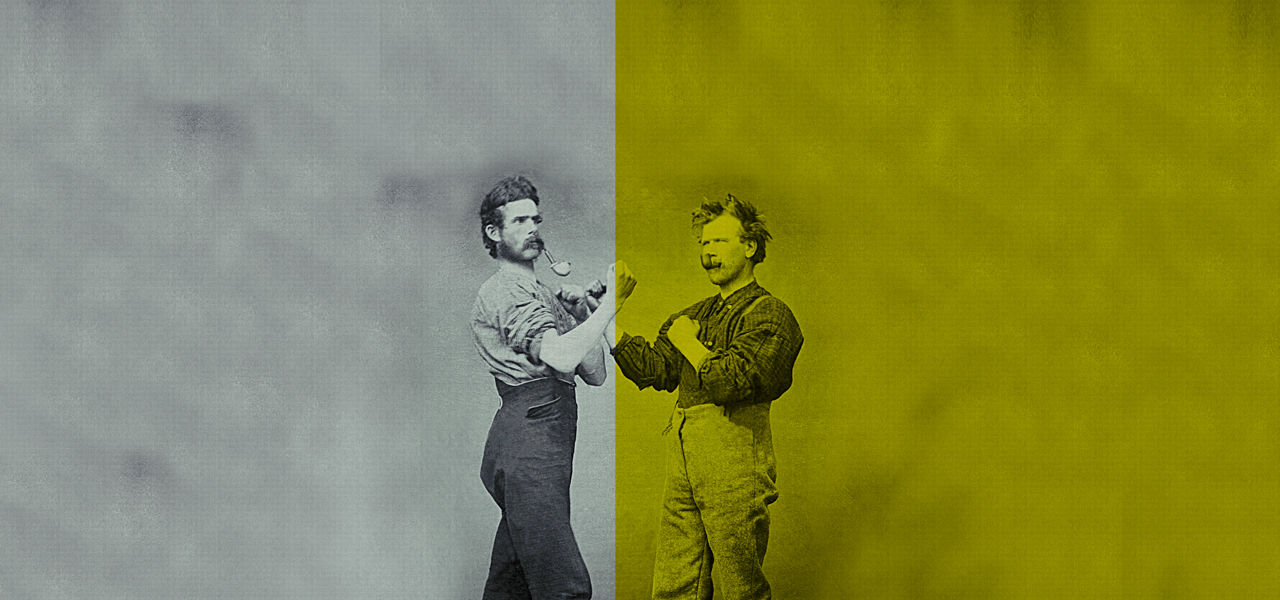


CANE AND STICK
By the 19th century, the walking stick had become the hallmark of distinction, authority and strength. For the gentlemen of the era, it was not only an indispensable fashion accessory but also a source of confidence, security and nonverbal deterrence on the streets of Europe.

VIGNY
LE CANE
CONTINUED
In its various designs and configurations, the walking stick was also valued at home, where it served as an objet d'art and an effective weapon against invaders. The French developed the walking stick into a formidable self-defense tool that became known as la canne. Adopted into the traditional savate training halls of the 1800s, it's remained by the side of the kicking art for more than 200 years.
Pierre Vigny was one of the most innovative masters of la canne. Born in France in 1869, he began training in savate, English boxing and fencing at a young age. During his teenage years, he often ventured from one academy to another, learning new martial arts techniques and testing his skills against anyone who'd pick up a sword, stick or pair of boxing gloves.
In 1886 he joined the army, where he served as the fencing master for the second regiment of the French artillery at Grenoble. After leaving the military in 1889, he moved to Geneva and opened a combat academy. During this period, he devoted several years to the perfection of his own method of la canne.

Pierre Vigny devised a system that could be described as a mixture of several indigenous European self-defense methods. Many of the passes, thrusts and wards resembled fighting techniques from German swordsmanship, and a collection of the foot skills were borrowed from savate and French boxing.
Upon receiving an offer from Edward W. Barton-Wright to assume the position of chief instructor at the Bartitsu School of Self-Defence, Pierre Vigny relocated to England in the late 1890s and introduced la canne and savate to the British. During his time there, he met and trained with two celebrated jujitsu instructors: Yukio Tani and S.K. Uyenishi.
From them, he acquired new martial arts techniques for his already efficient repertoire of self-defense skills, after which he formulated his method of personal combat, which included moves from wrestling, savate, jujitsu and sword dueling. The addition of the new techniques was deemed necessary because of the rise of hooliganism throughout England.
Perfecting Le Canne
Pierre Vigny's skill as a fighter and teacher attracted the attention of both the working class and the aristocracy. He served as a coach at the London Boxing Club and instructed at Aldershot Military School. Seeking better business opportunities, he moved to London, where he opened a school in 1903 under the patronage of Grand Duke Michael of Russia and became director and manager of the New School of Self-Defence and Fencing Academy.
Interestingly, his wife also taught there, offering ladies instruction in the use of the parasol and the steel-spiked umbrella.
The syllabus at the school catered to students who were interested in a variety of fighting arts. Even though he conducted classes in the fencing foil, sword, savate and self-defense from morning to night, la canne remained Pierre Vigny's pet project. He taught courses that lasted 12 weeks, a length of time he believed was sufficient to give the average person the ability to handle almost any emergency.
Shunning the lighter assault canes that were popular in the academic training halls — Pierre Vigny referred to them as “chopsticks"—he believed that a true walking stick should be rigid and sturdy. Because of his dislike for the less-functional models, he had one produced to his own specifications.
Termed the “Vigny self-defense stick," it was made from a medium-weight Malacca cane with a metal knob mounted on the end. The heavy ball served as the point of percussion, thus adding instant knockout effectiveness to the weapon.
